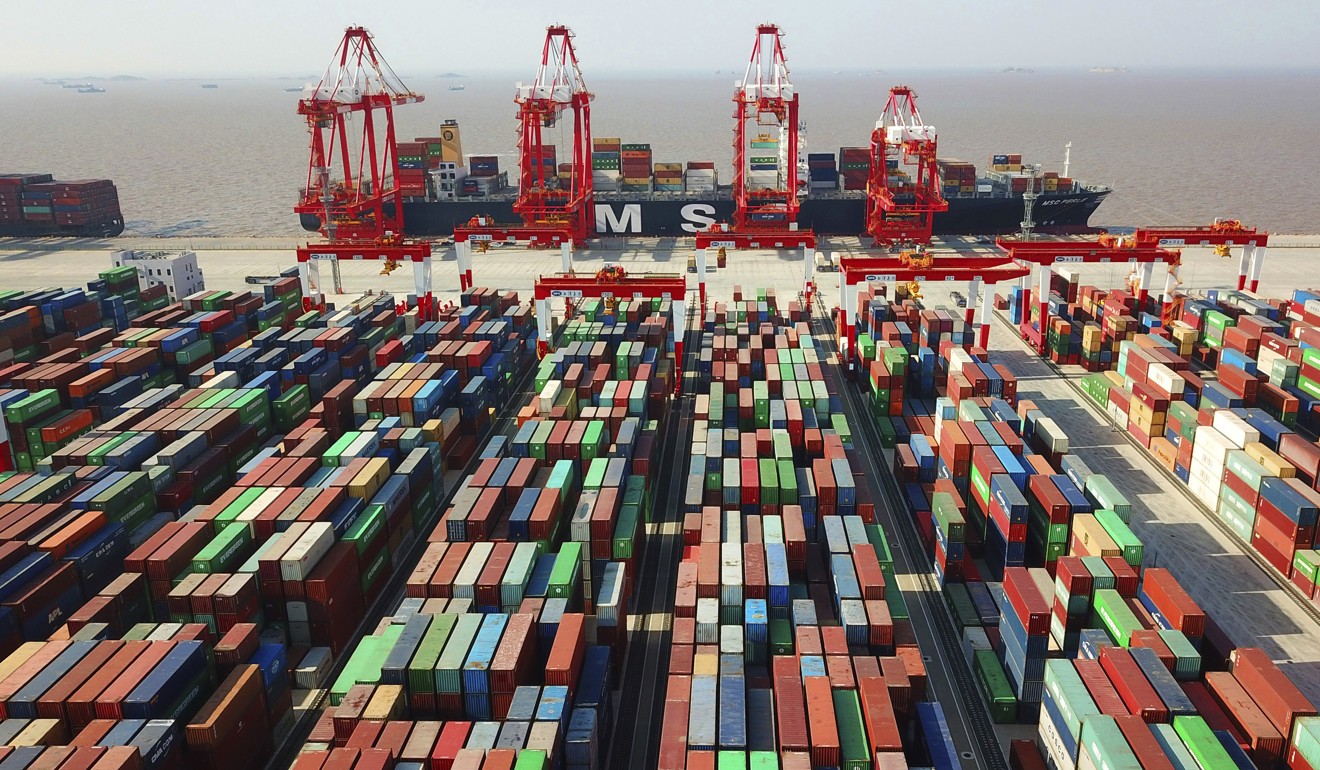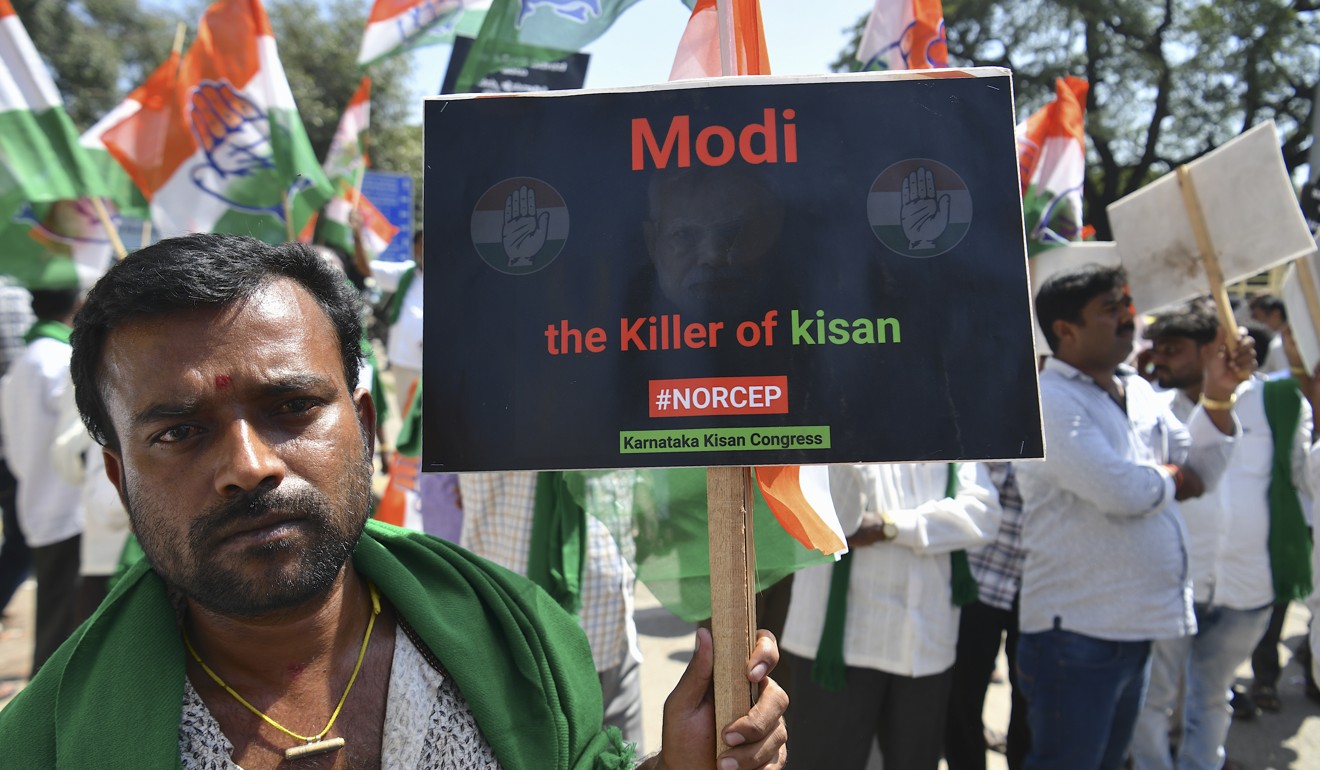David Dodwell
 New Zealand’s Prime Minister Jacinda Ardern, Indian Prime Minister Narendra Modi, Chinese Premier Li Keqiang and Thai Prime Minister Prayuth Chan-ocha hold hands at the third Regional Comprehensive Economic Partnership summit in Bangkok, Thailand, on November 4. India later decided not to sign the pact. Photo: Reuters
New Zealand’s Prime Minister Jacinda Ardern, Indian Prime Minister Narendra Modi, Chinese Premier Li Keqiang and Thai Prime Minister Prayuth Chan-ocha hold hands at the third Regional Comprehensive Economic Partnership summit in Bangkok, Thailand, on November 4. India later decided not to sign the pact. Photo: Reuters
As Britain’s Brexit-obsessed conservatives rally the country’s voters around the vision of new and open trade pastures, with the United Kingdom breaking loose of European Union fetters and building its own dynamic and liberal trade deals with the world, let them think about just one thing: the Regional Comprehensive Economic Partnership (RCEP).
The proposed 16-economy pact is the brainchild of Association of Southeast Asian Nations leaders keen to liberalise trade between themselves and with their key regional trading partners – Australia, New Zealand, Japan, South Korea, China and India. It was conceived in 2012 and could amount to the world’s largest trade block, embracing almost half the world’s population and a third of global gross domestic product.
But seven years later, we still await its birth. In Thailand last week, the deal tripped for the umpteenth time just short of the finish line, as India walked away, deciding the pact threatened its manufacturers and farmers.
I am among those who remain convinced that trade and investment liberalisation brings significant benefits to us all, playing a large part in overall poverty reduction, but I should be clear from the outset: RCEP offered very little to get excited about. Economically transformative it was not.
It has been talked of as a “stapler” with good reason, because it does nothing more than clip together existing Asean trade agreements. For once, I would agree with US Commerce Secretary Wilbur Ross (note that the United States is not part of the pact) in downplaying RCEP as a “very low grade treaty”.

A cargo ship is docked at the Yangshan container port in Shanghai in April 2018. The RCEP aims to liberalise trade between Asean countries and their key regional trading partners.
But at a time when multilateral, rules-based trade deals are in short supply, and the US, the world’s most significant trading power, is insisting on using its unilateral power to secure bilateral deals that put “America first”, even such a low-octane deal can provide symbolic assurance that most economies remain committed to the idea of multi-country liberalisation.
RCEP sits alongside the more meaningful Comprehensive and Progressive Agreement for Trans-Pacific Partnership (CPTPP), forged after US President Donald Trump walked away from the Obama-era Trans-Pacific Partnership early in 2017. Both are a recognition that even when the World Trade Organisation and its multilateral deals flounder, entrapped by the WTO’s consensus rules, most countries see still little merit in the US’ current playground-bully-unilateralism, and are actively seeking at least regional and “plurilateral” deals that can maintain momentum towards trade and investment liberalisation.
Nevertheless, RCEP’s decision to embrace India was from the outset seen as both visionary and fatal.
Visionary because it aimed at a deal that would link half the world’s population, and because it sought to counterbalance China’s growing clout across Southeast Asia with the power of India’s massive but mainly domestically-focused economy. Fatal, because India has over the past three decades built a reputation as a “blocker” of virtually all trade and investment liberalisation deals.
Last weekend, when India’s Prime Minister Narendra Modi announced withdrawal from RCEP, he waxed statesmanlike: “Neither the Talisman of Gandhiji nor my own conscience permits me to join RCEP.”
In reality, he was balking at inadequate protections against import surges, the possible circumvention of rules of origin and a lack of “credible assurances” on market access and non-tariff barriers – trade negotiator gobbledegook that adds up to fears of being swamped by Chinese manufactures, and by dairy products from New Zealand and Australia.
India’s reputation as a “blocker” goes back decades. In 2014, India held up the WTO’s modest Trade Facilitation Agreement, aimed at nothing more ambitious than simplifying customs regulations and procedures when products cross borders. In 2017, it blocked WTO efforts to improve investment facilitation rules. It has consistently crossed swords with the WTO on its right to subsidise and protect its farmers on the grounds of ensuring food security. Earlier this year, the WTO required India to cut illegal export subsidies amounting to US$7 billion.
When the US hyperventilates about how China is an “existential threat” to the world built in its image since the Bretton Woods agreements after World War II, it conveniently overlooks India, which, in spite of being a democracy, is among the most fiercely protected economies in the world, making few of the efforts made by China to align its trade regime to the multilateral rules prevailing worldwide and throwing up formidable internal barriers to foreign companies interested in competing in its market.
China might indeed amount to an existential threat, but this is rooted not in trade rules and practices, but in the fact that it has grafted the West’s rule book onto its own system to become a formidable competitor.

An activist holds a placard during a protest in Bangalore on November 4 called by the Congress Party and pro-farmer organisations to oppose Indian Prime Minister Narendra Modi’s government. Photo: AFP
The Indian government has assured other RCEP negotiators that it will look in the next quarter at how it might sign up to an RCEP deal. But as many dealing with India’s trade bureaucrats have learned, India’s idea of a quarter can last 25 years.
That leaves the other RCEP members facing a dilemma quite similar to that of TPP participants when the US walked away from that deal early in 2017. Do they procrastinate further, in spite of consensus reached over seven years by all other members? Or do they move forward with a 15-economy deal that India can join if and when it chooses?
TPP’s decision was clear: Japan took up the reins as leader of the group, and the CPTPP promises to bring more trade and lower costs for consumers across their 11 economies. From the outside, US companies and consumers are paying a price, in particular US food exporters.
On balance, I think the RCEP members will make the same choice. Already, some participants are celebrating. They argue that India’s blocking habit has already delayed the deal too long and that India’s protectionist sentiments have unacceptably lowered RCEP’s liberalising ambition. There is still a strong need to embrace an economic force that can counterbalance China’s rising influence across the region but that has been managed effectively so far, and can be a battle for another day.
Meanwhile, Britain’s Brexiteers should take note. Just as Trump was wrong to claim that trade wars are good and easy to win, so they too are wrong to believe that trade deals are good and easy to agree. They can expect a decade of pain, and some underwhelming results.
No comments:
Post a Comment